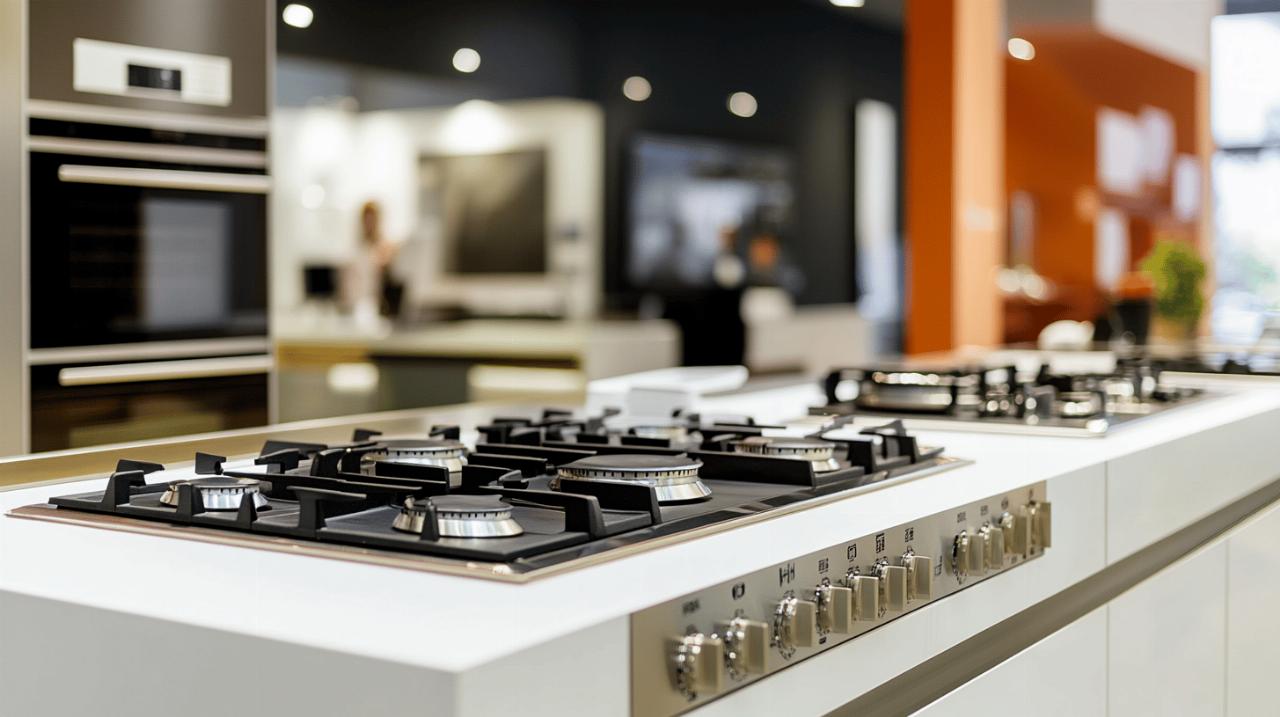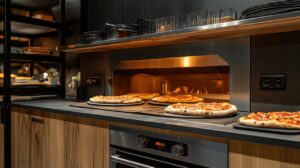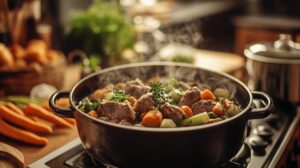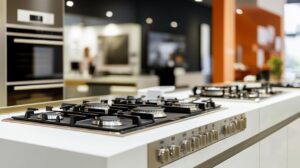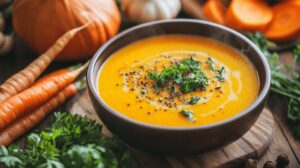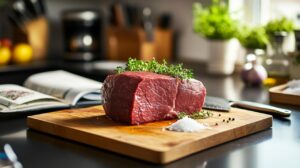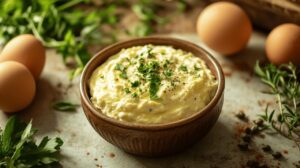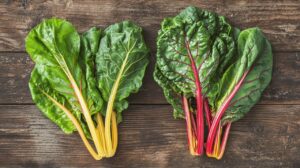What are the criteria to consider for choosing the right new cooker? Matching burner numbers to your cooking needs
Selecting a new cooker for your kitchen can feel like quite the undertaking, what with all the options on the market today. Whether you're replacing an old appliance or fitting out a brand-new kitchen, understanding what truly matters will help you make an informed decision that suits both your cooking style and your household's needs. From the type of fuel that powers your hob to the size of the oven cavity, every detail plays a role in how well your cooker performs day in and day out. This guide will walk you through the essential criteria to consider, ensuring that your new cooker becomes a reliable partner in your culinary adventures.
Understanding Cooker Types and Fuel Options for Your Kitchen
When it comes to choosing a cooker, one of the first decisions you'll face is the type of fuel it uses. This choice can significantly influence your cooking experience, as each fuel type offers distinct advantages and characteristics. Gas cookers have long been favoured by many home cooks for their instant heat and precise control. The moment you turn the dial, the flame responds, allowing you to adjust the temperature quickly and intuitively. This immediacy makes gas ideal for tasks that require careful heat management, such as simmering delicate sauces or searing meats. However, gas ovens tend to heat up quickly but may not always distribute heat as evenly as their electric counterparts, which can sometimes lead to uneven baking.
Electric cookers, on the other hand, are celebrated for their superior heat distribution, particularly in the oven. The consistent temperature makes them a favourite for baking enthusiasts who need reliable results with cakes, pastries, and roasts. Ceramic hobs, while slower to heat up initially, provide a smooth and easy-to-clean surface. Induction hobs represent the pinnacle of modern cooking technology, offering near-instant heat and exceptional energy efficiency. They work by generating a magnetic field that heats your cookware directly, which means the hob surface itself stays relatively cool. Do bear in mind, though, that induction hobs require pots and pans made from ferrous materials, so you may need to invest in new cookware if your current set isn't compatible.
Gas, Electric, and Induction: Comparing Heat Control and Efficiency
Dual fuel cookers combine the best of both worlds, pairing a gas hob with an electric oven. This configuration appeals to those who want the responsive control of gas burners for their stovetop cooking whilst benefiting from the even heat distribution of an electric oven for baking and roasting. When weighing up these options, it's also worth considering energy efficiency. Induction hobs are particularly efficient because they transfer heat directly to the pan, wasting very little energy in the process. This efficiency not only reduces your electricity bills over time but also makes your kitchen more comfortable to work in, as less ambient heat is produced.
The choice between gas, electric, and induction ultimately depends on your personal cooking habits and preferences. If you enjoy the tactile feedback and visual cues of an open flame, gas might be your preferred option. If you bake frequently and value consistent results, an electric oven could be the better choice. And if you're keen on cutting-edge technology and energy savings, induction is well worth considering. Many manufacturers now offer a range of models in each category, so you're sure to find something that fits your needs and budget.
Range cookers and multi-function models: finding your perfect match
Range cookers, sometimes affectionately referred to as pianos due to their size and presence, are designed for those who take their cooking seriously. These larger appliances typically start at around ninety centimetres in width and can extend up to an impressive two hundred and twenty centimetres, though there are also more compact models available for those with smaller kitchens. What sets range cookers apart is their combination of multiple ovens and a generous number of burners on the hob, giving you the flexibility to cook several dishes simultaneously at different temperatures. This is particularly useful if you're preparing a roast dinner with all the trimmings or entertaining guests with a multi-course meal.
Range cookers are available in gas, electric, and dual fuel configurations, so you can still choose the fuel type that suits you best. Brands such as Lofra, an Italian manufacturer with over sixty years of experience, offer a variety of sizes from sixty centimetres all the way up to one hundred and fifty centimetres. This means you can find a range cooker that fits comfortably in your kitchen without overwhelming the space. Multi-function ovens, often found in range cookers and standalone models alike, offer a host of cooking options including defrost, slow cook, and fast cook settings. These features make it easier to tackle a wide variety of recipes, from slow-braised casseroles to quickly reheated leftovers, all in one appliance.
Sizing up your cooker: dimensions, hob space, and kitchen layout
Getting the dimensions right is absolutely crucial when choosing a new cooker. Before you start browsing models, take the time to measure the space available in your kitchen. You'll need to account not only for the width of the cooker itself but also for any surrounding worktop space and ventilation requirements. Freestanding cookers are typically available in standard widths such as fifty or sixty centimetres, though range cookers can be much wider. If you're opting for a built-in model, you'll need to ensure that the cabinetry can accommodate the unit and that there's adequate clearance for doors and drawers to open comfortably.
It's also important to think about the electrics and gas supply. Freestanding gas cookers require a professional installation to connect to your gas line safely, and electric models will need a suitable power supply. If you're switching from one fuel type to another, you may need to arrange for additional work to be carried out by a qualified tradesperson. Taking accurate measurements and checking the installation requirements ahead of time will save you headaches later on and ensure that your new cooker fits seamlessly into your kitchen layout.
Measuring your kitchen space and ensuring proper fit
When measuring your kitchen, don't just focus on the width of the space where the cooker will sit. Consider the depth as well, as some range cookers and freestanding models are deeper than standard units. You'll also want to leave a bit of breathing room around the appliance to allow for proper air circulation and to make cleaning easier. If your kitchen has a particularly narrow layout, a sixty-centimetre cooker might be more practical than a ninety-centimetre range, even if you're tempted by the extra oven capacity.
Another factor to bear in mind is the height of the cooker. Most freestanding models are designed to sit at standard worktop height, but it's worth double-checking if you have any bespoke cabinetry or if your worktops are at a non-standard level. Built-in ovens can be installed at eye level or under the worktop, depending on your preference and the layout of your kitchen. Eye-level ovens are often more convenient as they reduce the need to bend down, which can be easier on your back and safer when handling hot dishes.
Matching Burner Numbers and Hob Size to Your Cooking Habits
The number of burners on your hob is another key consideration, and it should align with how you typically cook. A standard four-burner hob is sufficient for most households, providing enough space to cook a main dish, a side, and perhaps boil water for pasta or vegetables all at once. However, if you frequently find yourself juggling multiple pots and pans, a five or six-burner hob might be more suitable. Range cookers often feature five or more burners, giving you the flexibility to prepare elaborate meals without running out of space.
Burner sizes matter too. Small burners, which typically range from four thousand to six thousand BTUs, are ideal for gentle tasks like simmering sauces or melting chocolate. Medium burners, offering seven thousand to ten thousand BTUs, are your workhorses for everyday cooking tasks such as sautéing vegetables, frying eggs, or cooking grains. Large burners, rated at eleven thousand BTUs and above, are perfect for boiling water quickly, searing steaks, or cooking large quantities of food in one go. Having a variety of burner sizes on your hob means you can match the heat output to the task at hand, which not only improves your cooking results but also makes more efficient use of energy.
Oven capacity, features, and maintenance considerations
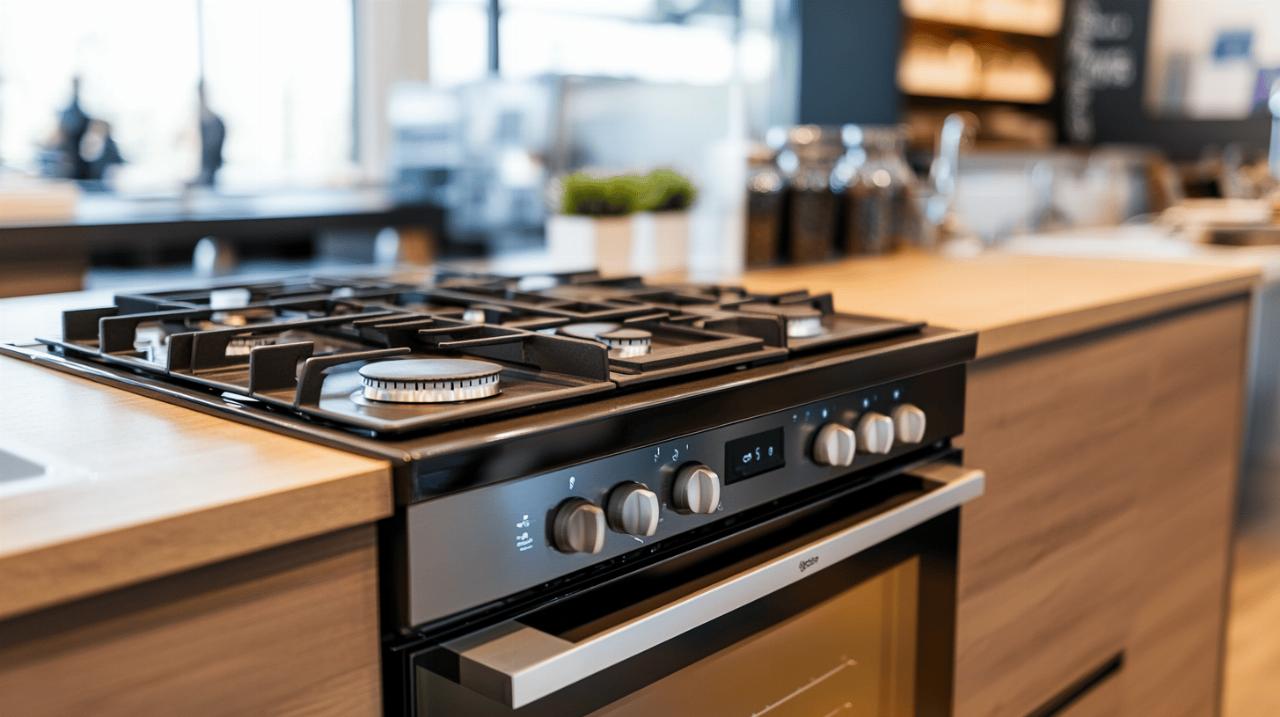 Once you've sorted out the hob, it's time to turn your attention to the oven. Oven capacity, measured in litres, is an important factor, especially if you regularly cook for a large family or entertain guests. A single oven typically offers between sixty and eighty litres of space, which is adequate for everyday cooking. If you need more flexibility, a double oven gives you two separate compartments, often with one larger main oven and a smaller top oven. This setup allows you to cook dishes at different temperatures simultaneously, which can be a real time-saver when preparing a full meal.
Once you've sorted out the hob, it's time to turn your attention to the oven. Oven capacity, measured in litres, is an important factor, especially if you regularly cook for a large family or entertain guests. A single oven typically offers between sixty and eighty litres of space, which is adequate for everyday cooking. If you need more flexibility, a double oven gives you two separate compartments, often with one larger main oven and a smaller top oven. This setup allows you to cook dishes at different temperatures simultaneously, which can be a real time-saver when preparing a full meal.
Multi-function ovens, sometimes called combi ovens, are incredibly versatile. They offer a range of cooking modes such as conventional heating, fan-assisted cooking, grilling, and even steam cooking. Conventional ovens have heating elements at the top and bottom, which can sometimes result in slightly uneven heat distribution. Fan ovens, or convection ovens, use a fan to circulate hot air around the cavity, ensuring a more consistent temperature throughout. This makes them particularly good for baking, as your cakes and biscuits will cook more evenly. Steam ovens, though less common, use steam to cook food, which helps retain nutrients and can enhance the texture of certain dishes.
Selecting the Right Oven Functions and Capacity for Your Household
When choosing an oven, think about the types of dishes you cook most often. If you're a keen baker, a fan oven with a good-sized cavity is likely to be your best bet. If you frequently roast meats or cook large casseroles, a conventional or multi-function oven with a decent capacity will serve you well. Some ovens come with additional features such as a slow cook mode, which is perfect for tenderising cheaper cuts of meat, or a rapid preheat function, which can save you precious minutes when you're in a hurry.
Another feature to consider is self-cleaning technology. Pyrolytic ovens, for instance, can heat up to around four hundred and eighty-five degrees Celsius, turning any food residue into ash that can be easily wiped away. This can be a real boon if you dread the chore of scrubbing baked-on grime. Other ovens may have a SimplySteam function, which uses steam to loosen dirt, making the cleaning process less arduous. Touch controls are another modern convenience, offering a sleek appearance and being easier to wipe down than traditional knobs and dials.
Hob surfaces and long-term appliance care
The surface of your hob is worth considering not just for its appearance but also for how easy it is to maintain. Glass and vitroceramic surfaces are sleek and modern, and they wipe clean relatively easily, though they can be prone to scratches if you're not careful. Stainless steel is more robust and can withstand a bit more rough treatment, but it may show fingerprints and smudges more readily. Gas hobs typically have cast iron pan supports, which are durable but require regular cleaning to prevent the build-up of grease and grime.
Prolonging the lifespan of your cooker involves more than just choosing a durable model. Regular maintenance is key. Always read the user manual before you start using your new appliance, as it will contain important information about the correct settings and any specific care instructions. Use appropriate cleaning products for the hob and oven surfaces, avoiding anything too abrasive that could cause damage. For gas burners, make sure the burner caps and nozzles are kept clean to ensure efficient combustion. Many modern cookers also come with features like telescopic sliders, which make it safer and easier to check on your food without having to reach deep into a hot oven.
Budgeting wisely: balancing price, energy ratings, and complementary appliances
Price is always a consideration when buying a new cooker, and it's wise to set a budget before you start shopping. Cookers can vary widely in cost, from a few hundred pounds for a basic freestanding model to several thousand for a high-end range cooker with all the bells and whistles. For example, a Maxima eighty-centimetre dual fuel range cooker might retail for around two thousand one hundred and fifty pounds, whilst a more elaborate Dolcevita ninety-centimetre double electric oven dual fuel range cooker could set you back nearly four thousand pounds. It's important to compare models with similar features and to consider not just the upfront cost but also the long-term running costs.
Energy efficiency is a key factor in those running costs. Cookers with a good energy rating will use less electricity or gas, which can lead to significant savings on your utility bills over the years. Induction hobs are particularly efficient, as they waste very little energy, while fan ovens tend to cook more quickly and at lower temperatures than conventional ovens, which also helps to reduce energy consumption. When comparing models, look for the energy label, which will give you an idea of how efficient the appliance is. Investing in a more efficient cooker might cost a bit more upfront, but it can pay for itself over time through lower energy bills.
Setting your budget and comparing value across models
When setting your budget, think about what features are essential and which are nice to have. If you rarely bake, for example, you might not need a multi-function oven with a dozen different settings. On the other hand, if you cook large meals regularly, the extra capacity and burners of a range cooker could be well worth the investment. It's also worth considering the brand and the warranty. Established brands often offer better after-sales service and longer warranties, which can provide peace of mind. For instance, some manufacturers offer a ten-year parts guarantee if you register your appliance within ninety days of purchase, which is a reassuring safety net should anything go wrong.
Don't forget to factor in installation costs as well. Gas cookers require professional installation, which will add to the overall expense, whilst electric models might need an upgraded power supply if your current wiring isn't up to scratch. Some retailers offer installation services as part of the purchase, which can be convenient and ensure that the job is done safely and correctly. Comparing prices across different retailers can also help you find the best deal, and it's worth keeping an eye out for seasonal sales or special promotions that might offer significant discounts.
Extractor Fans and Additional Kitchen Appliances to Consider
A new cooker isn't the only appliance you'll need to think about. An extractor fan, or hood as it's sometimes called, is essential for removing cooking fumes, steam, and odours from your kitchen. This not only keeps your kitchen smelling fresh but also helps to prevent the build-up of grease on your walls and cabinets. Extractor fans come in various styles, from sleek canopy models that sit above a range cooker to more discreet integrated units that fit into your cabinetry. The extraction rate, measured in cubic metres per hour, should be matched to the size of your kitchen and the type of cooking you do. If you frequently cook with strong-smelling ingredients or do a lot of frying, a more powerful extractor will be beneficial.
You might also want to consider whether you need a separate microwave. Some cookers come with a microwave function built into one of the ovens, which can save worktop space and streamline your kitchen layout. However, a standalone microwave offers more flexibility and can be positioned at a convenient height for easy access. Other complementary appliances to think about include dishwashers, which can take the hassle out of cleaning up after cooking, and additional storage solutions such as pan drawers or spice racks that make the most of your kitchen space. By planning your kitchen as a cohesive whole, you'll create a space that's not only functional but also a pleasure to cook in, turning everyday meal preparation into an enjoyable experience.
